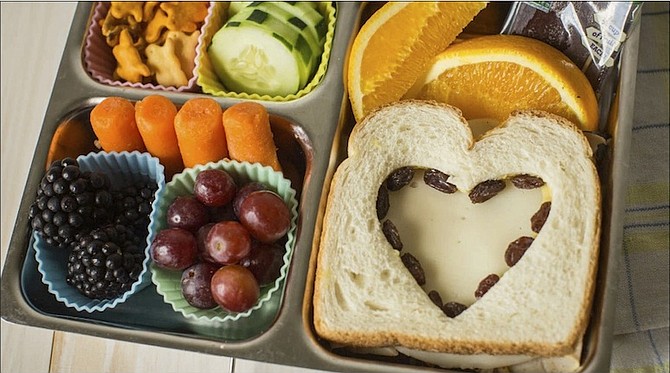By Christine Carey
Tips for making healthy affordable lunches
AS I prepare to send my three kids back to school I want to make sure that each day their food is healthy, energising, tasty, low-fuss and low-cost. Here are a few tips and tricks to help you along this school year.
Bento box lunches
This year, I am making “easy and nutritious” my motto and using a five-container bento box (from the Japanese for home-packed meal) for each of my kids that I purchased from Kelly’s. Here are some ideas for the filling the different sections:
Largest section
• Leftovers from dinner
• Whole grain spaghetti and sauce
• Whole grain (brown rice, wild rice, quinoa, amaranth etc) plus a vegetable (whatever your children like from dinner the night before) and plant-based protein (like tofu or tempeh) or animal protein (like chicken or fish)
• Bean and whole grain
• Dark leafy green salad with beans
Medium section
• Always a serving of fruit; rotate the favourites and choose fruit that is local and seasonal
Two smallest sections
• A complex carbohydrate snack, like whole grain dry cereal, a home-made banana bread, date balls of crackers
• A raw vegetable (put dip in a separate well sealed container), for example edamame or peas
Plan your menus in advance. By doing this household administration task you will be able to shop more efficiently, possibly save more money and prevent yourself from purchasing the less healthy food options while you’re on the run.
Use all natural, no sugar added concentrated fruit juices diluted with water in a water bottle rather than buying juice boxes. Cherry and lemon are great options. You can use fresh squeezed lemon with a little local raw honey as a great energizing drink. At Liquid Nutrition, we sell concentrated cherry which is very high in vitamin C and super tasty. I personally mix it with sparkling water to replace soda in our home.
Mix in less expensive items with more expensive ones. Quinoa is a great option as a substitute for white rice in recipes. Quinoa can be purchased at all local food stores and is cooked just like white or Jasmine rice. Soak your favourite dry bean overnight and cook according to the package instruction and mix with the quinoa for a nutritious addition to the lunch box.
Quinoa (a little expensive) plus beans (inexpensive) = Good source of protein and slow burning energy.
For one meal a week, switch more expensive proteins like chicken, beef and pork to beans. Buy dried beans rather than canned for even more savings.
Buy frozen vegetables rather than fresh as needed for additional savings. Local organic produce is always the best choice and is often very affordable when in season. But when you have to cut cost without too much compromise to nutritional content, frozen veg are a good alternative.
Vary the way you cut fruits, vegetables and sandwiches to provide more interesting presentation. Use cookie cutters and baking shapes; it’s amazing what you can get someone to eat based on presentation.
Use the same ingredient multiple ways. Using an ingredient in different recipes can cut down on refrigerator and pantry inventory and reduce waste. Cut up leftover spaghetti and use it as an addition to a casserole the following night, or in a pasta salad for lunch.
Batch cooking is essential for time saving. Cooked food generally lasts three days in the fridge.
Pay attention to serving size. Increase the amount of veggies, whole grains, legumes and fruits and decrease the amount of animal protein.
Many schools ban all nut items due to allergies. Nuts and seeds are an important source of proteins and fats, so make sure that your kids eat them when they are at home or in the car before or after school.
“Let food be thy medicine and medicine be thy food.” – Hippocrates
• All health content in “Become the healthiest happiest version of yourself” is provided for general information only and should not be treated as a substitute for the medical advice of your own doctor or any other health care professional.
Christine Carey is a certified holistic health coach (www.christine-carey.com) and owner/operator of Liquid Nutrition (www.liquidnutrition.com). With over ten years of coaching experience, Ms Carey works with individuals and groups to assess and define their health and lifestyle goals with a strong focus on increasing knowledge and implementing tools for success.





Comments
Use the comment form below to begin a discussion about this content.
Sign in to comment
Or login with:
OpenID